
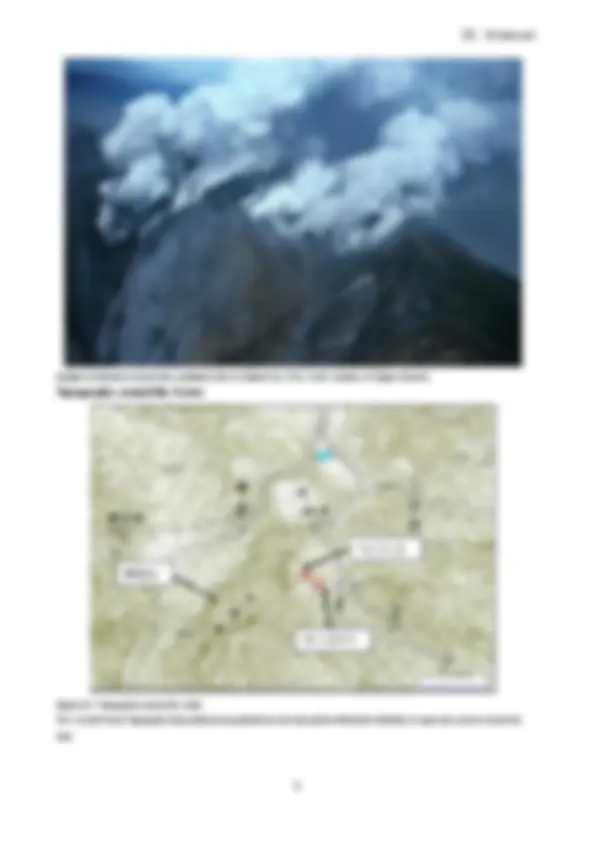
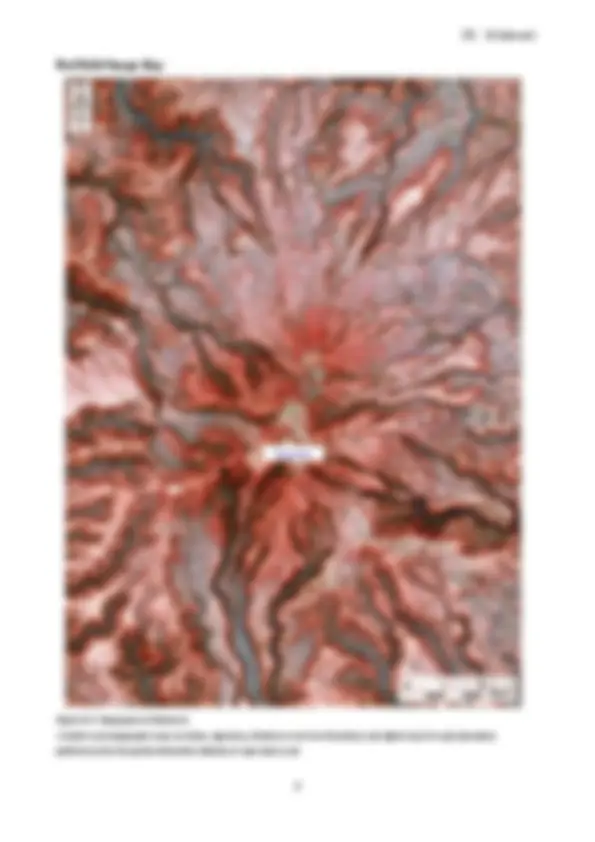
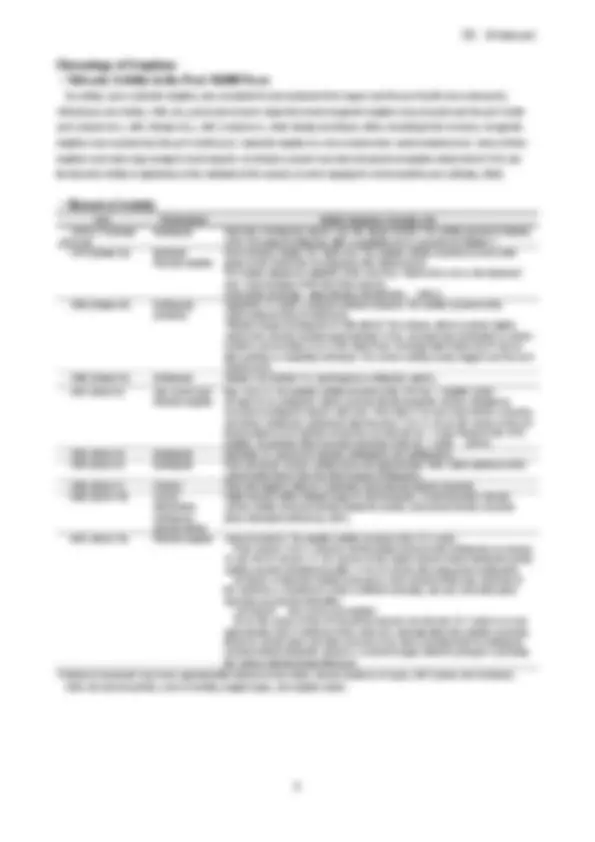
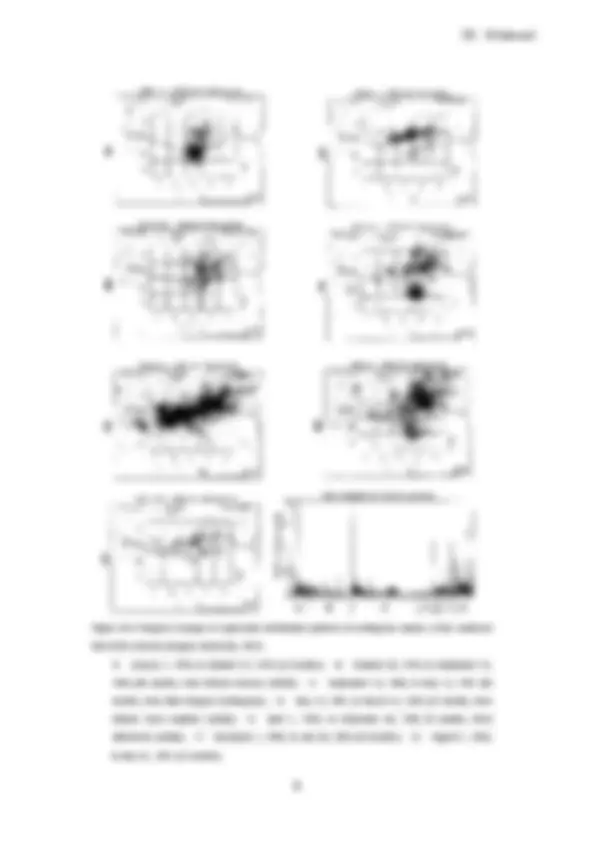
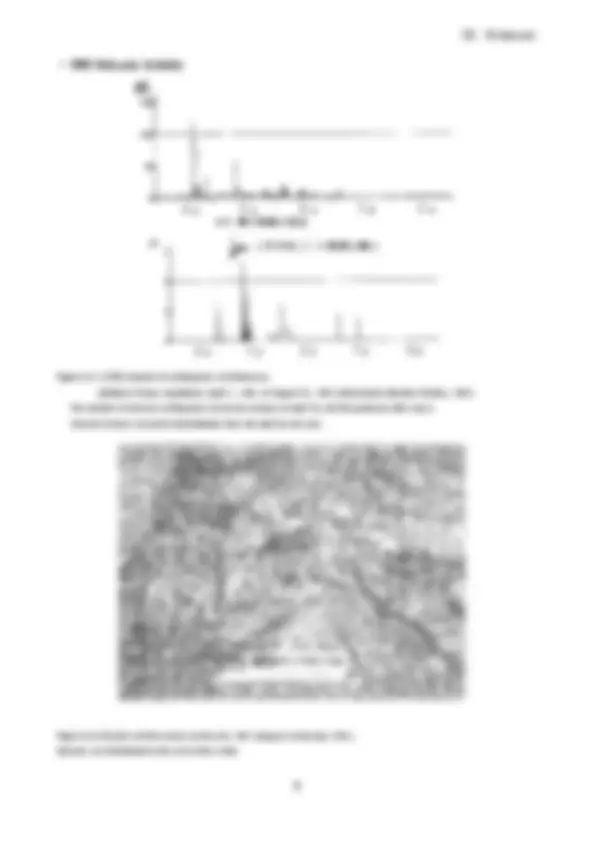
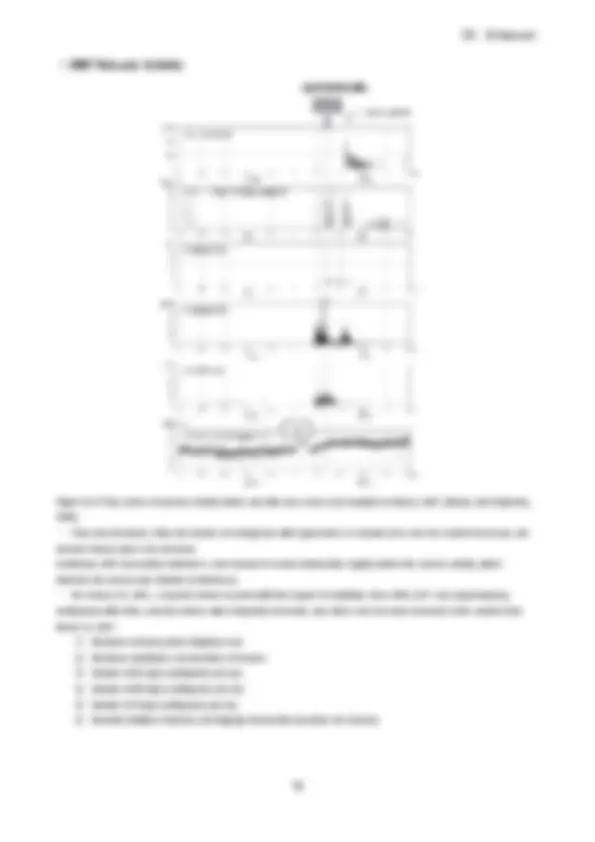

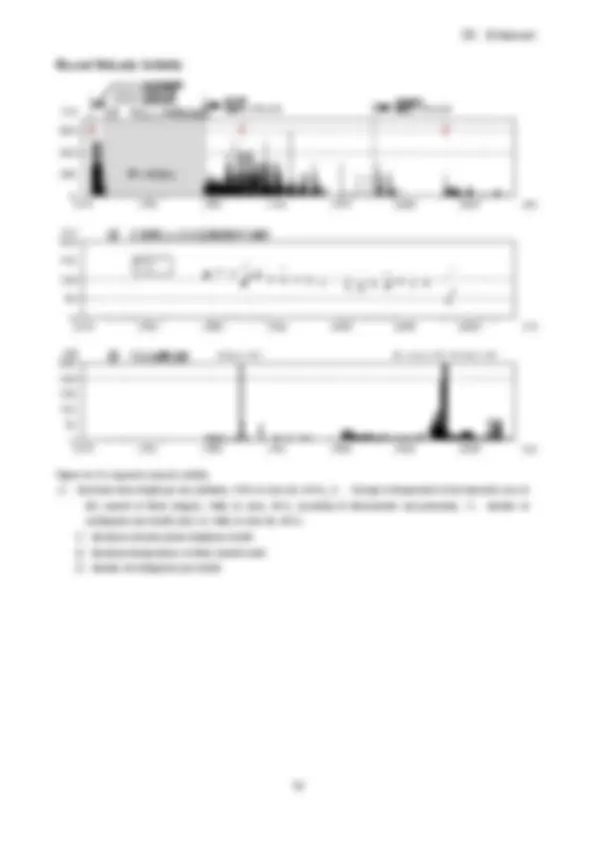
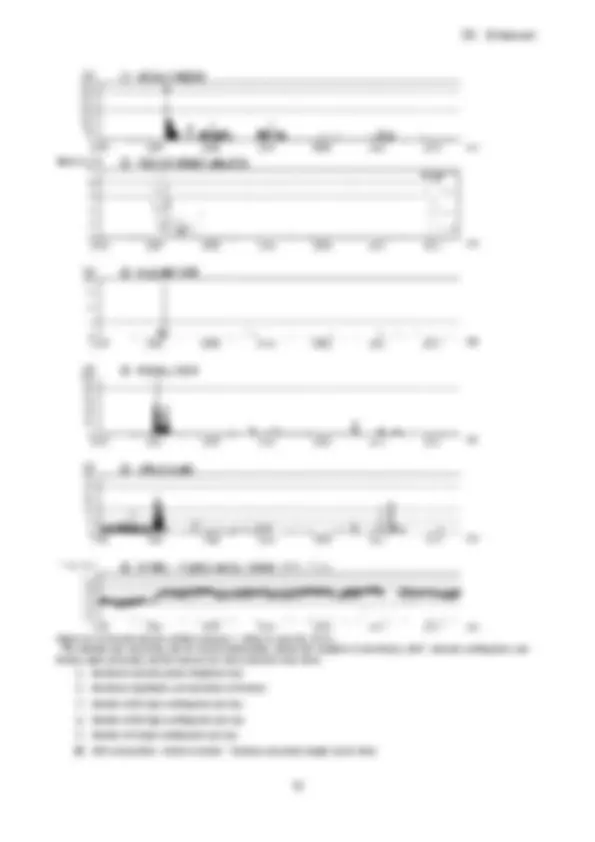
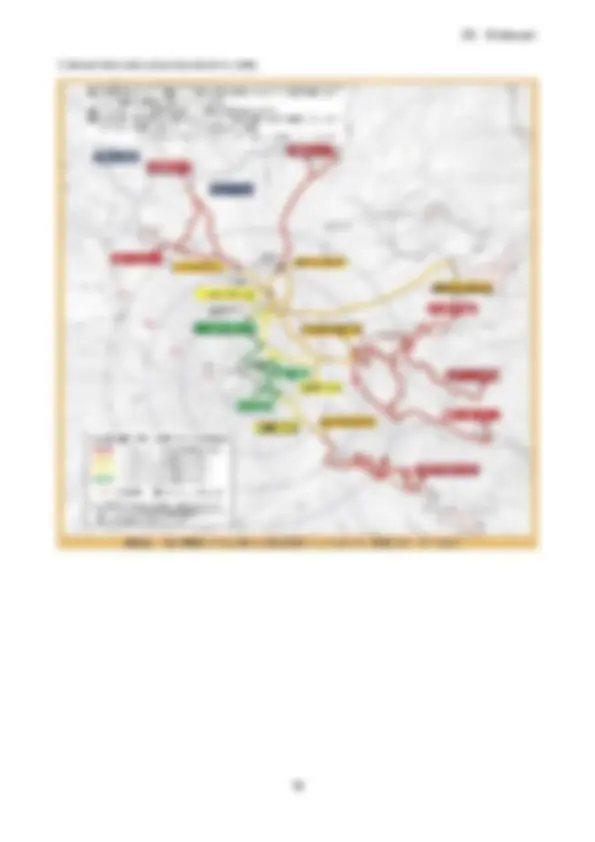
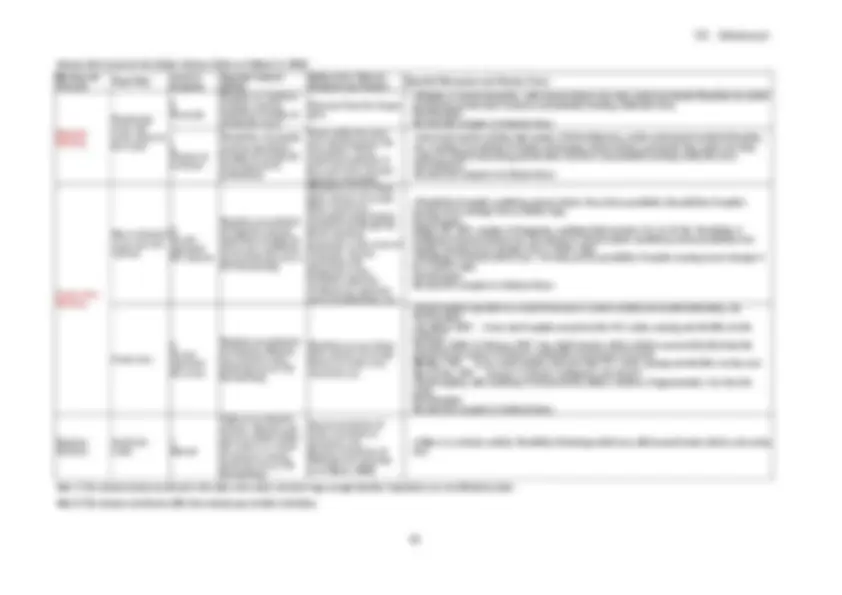
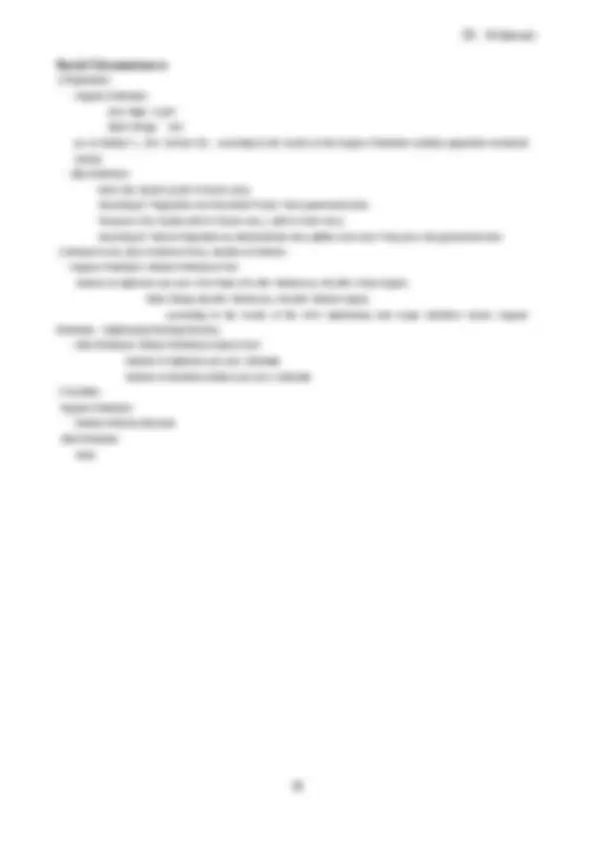
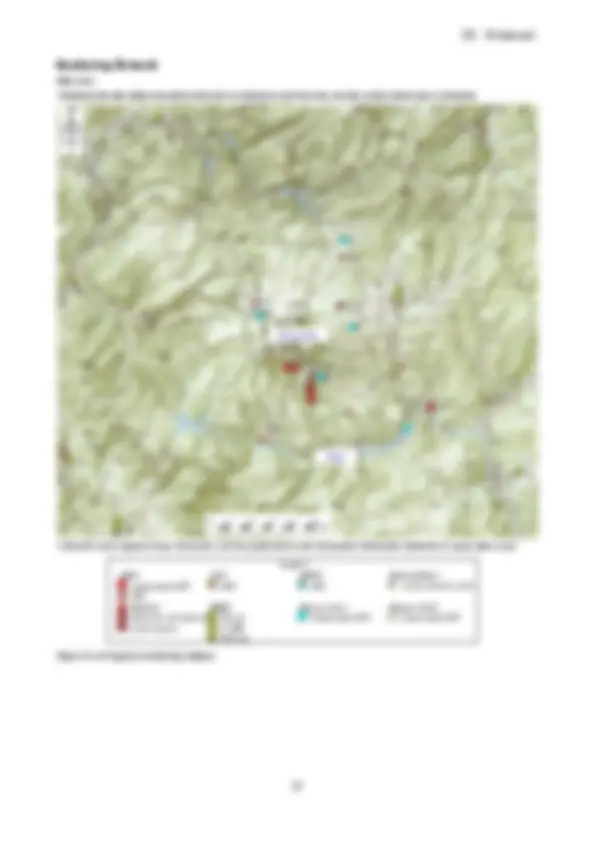
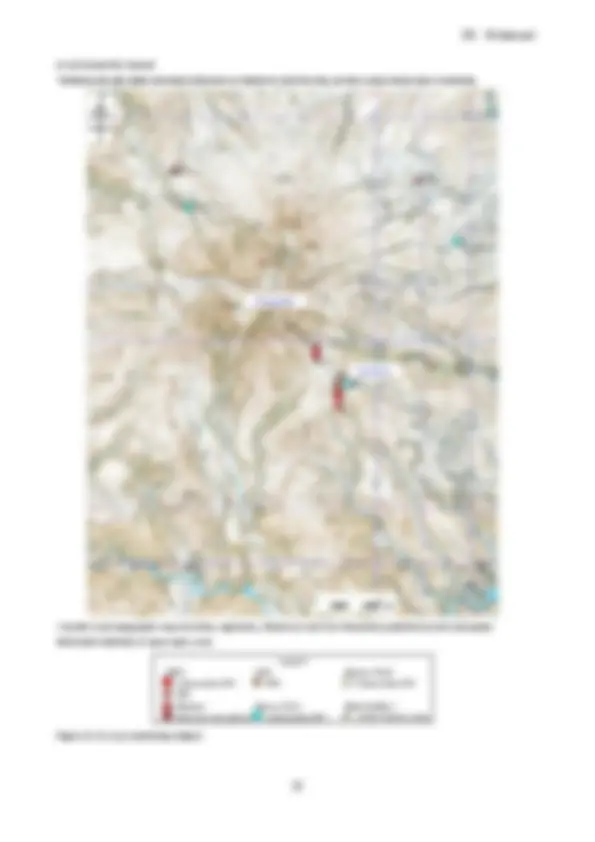
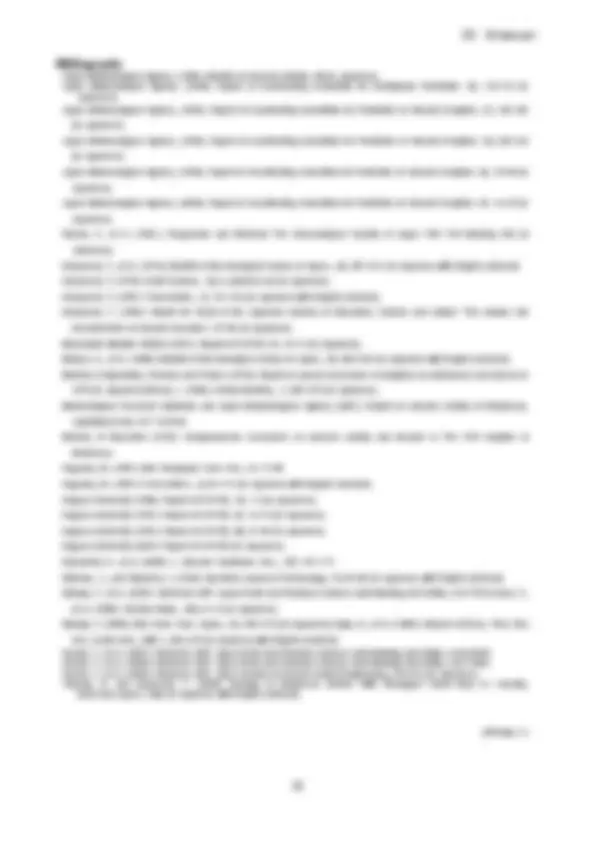


Study with the several resources on Docsity

Earn points by helping other students or get them with a premium plan


Prepare for your exams
Study with the several resources on Docsity

Earn points to download
Earn points by helping other students or get them with a premium plan
Community
Ask the community for help and clear up your study doubts
Discover the best universities in your country according to Docsity users
Free resources
Download our free guides on studying techniques, anxiety management strategies, and thesis advice from Docsity tutors
An overview of the Ontakesan volcano, including its location, past and major volcanic activity, and monitoring networks. figures and references to research studies and reports. The Ontakesan volcano is a stratovolcano located in Japan, with a history of volcanic activity dating back over 10,000 years. The document details several eruptions, including the 1979 eruption and the 2007 eruption, and the seismic activity leading up to these events. The document also includes information on the distribution of earthquake hypocenters and volcanic ash, as well as figures showing the temporal changes in hypocenter distribution patterns and the number of earthquakes. useful for students and researchers studying volcanology and geology.
What you will learn
Typology: Exercises
1 / 23

This page cannot be seen from the preview
Don't miss anything!
















Latitude: 35°53'34" N, Longitude: 137°28'49" E, Elevation: 3,067 m (Kengamine) (GSI Measuring Point)
Overview of Ontakesan taken from northeast side on June 4, 2001 by the Japan Meteorological Agency
The Ontake volcano is a stratovolcano located at the southern tip of the Norikura volcano range. The volcanic edifice was built up during an early and late stage of activity, separated by a period of erosion. During the start of the late stage Ontake, a caldera was formed, but later activity filled in the caldera and the radiated valley, forming the roughly conical shape that exists today. During the most recent stage of activity, several small andesitic stratovolcanoes were formed at the summit, extending from north to south. Several of the craters are now crater lakes. Ontake consists of basalt, andesite, and dacite. A steam plume has been observed since the eruption of 1979, and in March, 2007 (Heisei 19), a small phreatic eruption occurred. Fumarolic areas exist on both the west side of the Otaki summit and in Jigokudani. The late stage Ontake volcano was made up of the Mamahahadake and Marishiten volcano groups. Approximately 90,000 to 110,000 years ago it became active with a large pumice eruption of rhyolite which began at the Pm-I air-fall pumice layer, tephra covering a wide area, and the formation of a caldera. Approximately 80,000 to 90,000 years ago activity began at the rhyolite-dacite Mamahahadake volcano group, filling in the caldera and forming a volcanic edifice composed of lava domes and pyroclastic flows. This was followed by the activity at the andesitic Marishiten volcano group approximately 80,000 years ago. The activity encompassed 8 volcanoes, with the locations of craters shifting within the caldera. The caldera was almost completely filled in, and the current summit group, which stretches north-south, was formed. The Kiso River lahar deposits came from a large debris avalanche and debris flow which occurred approximately 50,000 years ago, during this stage. This flow extended along the Kiso River approximately 150 km. During the last 20,000 years, activity consists mainly of phreatic explosions.
At the southeastern foot of the volcano earthquakes have been frequent since 1978. On September 14, 1984 (Showa 59) an M6. earthquake, the Western Nagano Earthquake of 1984, struck, which caused 4 major landslides and flank failures at and around Ontakesan, killing 29. A particularly large flank failure, which occurred upstream in the Denjo River, involved 34 million cubic meters of soil. The collapsed soil flowed 12 km down the Denjo, Nigori, and Otaki rivers, depositing soil several dozen meters deep. Almost all of the sand was washed into the Denjo River, downstream. The SiO 2 content is between 50.3 and 72.6 wt %. Ontakesan is also known as Kiso-Ontakesan.
Sannoike taken from west side on September 29, 2011 by the Japan Meteorological Agency
Jigokudani taken from the southeast side on September 27, 2011 by the Japan Meteorological Agency
Figure 53-2 Topography of Ontakesan. 1:50,000 scale topographic maps (Kashimo, Agematsu, Ontakesan and Kiso-Fukushima) and digital map 50 m grid (elevation) published by the Geospatial Information Authority of Japan were used.
Kengamine
No activity, such as phreatic eruptions, was considered to have produced fresh magma over the past 20,000 years (Kobayashi, 1993;Kimura and Yoshida, 1999, etc.), but recent research shows that several magmatic eruptions have occurred over the past 10, years (Suzuki et al., 2007; Oikawa et al., 2007; Suzuki et al., 2009; Oikawa and Okuno, 2009). According to this research, 4 magmatic eruptions have occurred over the past 10,000 years. A phreatic eruption has also occurred every several hundred years. Some of these eruptions have been large enough to leave deposits. No historical records have been discovered of eruptions before that of 1979, but the fumarolic activity at Jigokudani, to the southwest of the summit, has been ongoing for several hundred years (Oikawa, 2008).
Year Phenomenon Activity Sequence, Damages, etc. 1978 to 79 (Showa 53 to 54)
Earthquake From May. Earthquake swarms near the village of Otaki. The activity peaked in October,
Early morning, October 28. Tephra fall. The eruptive activity occurred at small crater group on the south flank of Kengamine (the highest peak). The activity stopped by nighttime of the same day. Tephra fall as far as the Maebashi area. Crop damaged at the foot of the volcano. Total ejecta discharge : approximately 200,000 tons. (VEI 2) 1984 (Showa 59) Earthquake, (collapse)
September 14. Debris avalanche (Ontake collapse). The activity occurred at the south-southeast flank of Ontakesan. "Western Nagano Earthquake of 1984 (M6.8)" The collapse, which occurred slightly south of the summit, travelled approximately 10 km, causing major destruction in various locations and reaching as far as the Otaki River. 29 people were killed and 87 houses were partially or completely destroyed. The seismic activity mostly stopped over the next several years. 1988 (Showa 63) Earthquake October 4 to October 10. Low-frequency earthquake swarms. 1991 (Heisei 3) Very small-scale: Phreatic eruption
May 13 to 16. The eruptive activity occurred at the 1979 No. 7 eruption crater. On April 20 an earthquake swarm occurred directly below the volcano, followed by occasional earthquake swarms until June. From April 27 to June many tremors occurred, and tremor activity was particularly high from May 12 to 16. An on-site survey on May 20 found evidence of an ejection of volcanic ash from the No. 7 crater formed in the 1979 eruption. No previous fume had been observed at the No. 7 crater. (VEI 0) 1992 (Heisei 4) Earthquake November 12. Increase in volcanic earthquakes (52 earthquakes). 1993 (Heisei 5) Earthquake From late March seismic activity increased approximately 10km south-southeast of the summit (aftershocks from the West Nagano Earthquake). 1995 (Heisei 7) Tremors From late August a total of 7 extremely small volcanic tremors occurred. 2006 (Heisei 18) Crustal deformation, earthquake, volcanic tremor
Slight volcanic edifice inflation began in mid-December. In late December volcanic seismic activity increased directly below the summit, and volcanic tremors occurred (these fluctuated until March, 2007). 2007 (Heisei 19) Phreatic eruption January to March. The eruptive activity occurred at the 79-7 crater. From January 16 to 17 volcanic seismicactivity increased (90 earthquakes on January 16 and 164 on January 17). On January 25 the largest volcanic tremor during this period activity occurred (including one with a 15 to 20 second ultra-long-period component). On March 16 fumarolic activity increased (a small amount of fume was observed at the summit by a surveillance camera in Mitake Kurozawa, and very small fume were observed occasionally thereafter). Late March? Very small-scale eruption: An on-site survey on May 29 discovered volcanic ash from the 79-7 crater in an area approximately 200 m northeast of the crater (it is unknown when the eruption occurred). Based on seismic wave and other research, it has been concluded that an earthquake occurred directly below the summit as a result of magma intrusion (rising to 4 km below the surface) directly below Ontakesan.
Figure 53-5 Distribution of ejecta deposits from October 28, 1979, eruption (Ministry of Agrculture, Forestry and Fishers, 1979). Volcanic ash was distributed from the east to the northeast of the crater.
Figure 53-6 Temporal changes in hypocenter distribution patterns of earthquake swarms at the southeast
foot of the volcano (Nagoya University, 1997).
A: January 1, 1978, to October 27, 1979 (22 months). B: October 28, 1979, to September 13, 1984 (58 months, from Ontake volcano activity). C: September 14, 1984, to May 12, 1991 ( months, from West Nagano Earthquake). D: May 13, 1991, to March 31, 1993 (23 months, from Ontake small eruption activity). E: April 1, 1993, to November 30, 1993 (8 months, M4. aftershock activity). F: December 1, 1993, to July 30, 1995 (20 months). G: August 1, 1995, to May 31, 1997 (22 months).
Figure 53-9 Time series of volcanic activity before and after very small scale eruption on March, 2007 (Otsuka and Fujimatsu, 2009). ・ From late December, 2006, the number of earthquakes with hypocenters in shallow areas near the summit increased, and volcanic tremors were also observed. Continuous GPS observation detected a small amount of crustal deformation slightly before the seismic activity, which indicates the volcano was inflated at Ontakesan. ・ On January 25, 2007, a volcanic tremor occurred with the largest of amplitude since 2006 (VLF: very-long-frequency earthquake).After then, volcanic tremors were frequently observed, and, fumes had also been observed at the summit since March 16, 2007. ① Maximum volcanic plume height per day ② Maximum amplitudes and durations of tremors ③ Number of BL-type earthquakes per day ④ Number of BH-type earthquakes per day ⑤ Number of A-type earthquakes per day ⑥ Baseline between Tanohara and Nigorigo Onsenshita (baseline ref: 8,622m)
Figure 53-10 Distribution of earthquake hypocenters in and around the Ontakesan, determined by the Double Difference method (December 30, 2006, to May 2, 2007) (Nagoya University, 2007). The elevations at each seismic station were taken into consideration. The red circle indicates hypocenters directly below the Ontakesan summit. Earthquakes directly below the summit are arranged in a vertical column between 1 km above sea level and 3 km below sea level.
Figure 53-11 Distribution of volcanic ash, confirmed on May 29, 2007 (Japan Meteorological Agency, 2008). The aerial and field survey indicated that a very small eruption occurred in late March.
Magma intruded directly below Ontakesan, causing the inflation in the deep part of the volcano. Magma caused rapid heating of ground water, which excited very-long-period earthquakes. Movement, etc. of the volcanic gas separated from the magma produced low-frequency earthquakes and volcanic tremors directly below the summit, followed by a phreatic eruption.
Figure 53-14 Very-long-period (VLP) earthquake mechanism in the 2007 phreatic explosion (Nakamichi et al, 2009).
Figure 53-15 Long-term volcanic activity. ① : Maximum fume height per day (October, 1979, to June 30, 2012), ② : Change in temperature in the fumarolic area at the summit of Otaki (August, 1988, to June, 2012, according to thermometer measurement), ③ : Number of earthquakes per month (July 15, 1988, to June 30, 2012) ① Maximum volcanic plume height per month ② Maximum temperatures at Otaki summit crater ③ Number of earthquakes per month
田 の 原 遠 望 カ メ ラ に よ る
三 岳 黒 沢 遠 望 カ メ ラ に よ る
1979/10 ~ 三 岳 村 屋 敷 野 1980/04 ~ 大 滝 村 久 蔵 1980/06 ~ 三 岳 村 黒 沢
258(Apr il, 1991) 968: Jan uary, 2007 ; 4 20: Ma rch , 200 7
Figure 53-17 Activity of shallow VT earthquakes (blue circles) and deep low-frequency earthquakes (red circles) observed by a regional seismometer network (October 1, 1997, to June 30, 2012). Epicenter distribution (upper left), space-time plot (N-S cross-section) (upper right), E-W cross-section (lower left) and magnitude-time diagram (by scale) (lower right).
The very small eruption of 2007 was preceded by a high number of volcanic earthquakes, volcanic tremors, and inflation.
① Hazard Map ・ Ontakesan Volcano Disaster Prevention Map - February, 2009 (Gifu Prefecture Gero Civil Engineering Office) http://www.pref.gifu.lg.jp/kendo/michi-kawa-sabo/sabo/sabo-jigyo/kazanbosai/ontakemap.html
Volcanic Alert Levels for the Ontake Volcano (Valid as of March 31, 2008) Warning and Forecast Target Area^
Levels & Keywords
Expected Volcanic Activity
Actions to be Taken by Residents and Climbers Expected Phenomena and Previous Cases
Eruption Warning
Residential areas and areas closer to the crater
5 Evacuate
Eruption or imminent eruption causing significant damage to residential areas
Evacuate from the danger zone
●Eruption or imminent eruption , with volcanic blocks, lava flow, and/or pyroclastic flow (lahar by melted snow during periods when snow has accumulated) reaching residential areas. Past Examples No observed examples in historical times. 4 Prepare to evacuate
Possibility of eruption causing significant damage to residential areas (increased probability).
Those within the alert area should prepare for evacuation. Those requiring protection in the event of an disaster must be evacuated.
●Increased eruptive activity, high number of felt-earthquakes, and/or prodominant crustal deformation, etc. resulting in possibility of eruption discharging volcanic blocks, pyroclastic flow, and/or lava flow ( lahar by melted snow during periods when snow has accumulated) reaching residential areas. Past Examples No observed examples in historical times.
Crater Area Warning
Non-residential areas near the volcano
3 Do not approach the volcano
Eruption or prediction of eruption causing significant damage to areas near residential areas (entering area is life threatening).
Residents can go about daily activity as normal. When necessary, evacuation preparations should be performed for those requiring protection in the event of a disaster. Access restrictions for dangerous areas, including mountain climbing and mountain access prohibitions, etc.
●Possibility of eruption scattering volcanic blocks 1km, but no possibility of possibility of eruption causing severe damage 4 km or further away. Past Examples October 28, 1979: eruption at Kengamine, southwest flank (craters 79-1 to 79-10). Possibility of scattering of volcanic blocks over 1km (based on volcanic plume conditions), but no possibility of an eruption causing severe damage 4 km or further away. ●Scattering of volcanic blocks over 1 km away, but no possibility of eruption causing severe damage 4 km or further away. Past Examples No observed examples in historical times.
Crater area
2 Do not approach the crater
Eruption or prediction of eruption affecting area around crater (entering area is life threatening).
Residents can go about daily activity as normal. Access to crater area restricted, etc.
●Small eruption expected as a result of increase in seismic activity and crustal deformation, etc. Past Examples Late March, 2007: A very small eruption occurred at the 79-7 crater, causing ash fall 200 m to the northeast December, 2006, to February, 2007: Very slight volcanic edifice inflation occurred directly below the summit and the number of volcanic earthquakes and tremors increased Mid-May, 1991: A very small eruption occurred at the 79-7 crater, causing ash fall 200 m to the east April to July, 1991: Increase in volcanic earthquakes and tremors ●Small eruption, with scattering of volcanic blocks within a distance of approximately 1 km from the crater. Past Examples No observed examples in historical times.
Eruption Forecast
Inside the crater
1 Normal
Little or no volcanic activity. Volcanic ash may be emitted within the crater as a result of volcanic activity (entering area is life threatening).
Access to interior of crater restricted as necessary, etc. (Access to interior of Hachotarumi restricted as of March, 2008)
●Little or no volcanic activity. Possibility of discharge which may affect summit crater interior and nearby area.
Note 1) The volcanic blocks mentioned in this table refer mainly to blocks large enough that their trajectories are not affected by wind. Note 2) The volcanic alert levels differ from volcanic gas related restrictions.
① Populations ・ Nagano Prefecture Kiso Town: 12, Otaki Village: 945 (as of October 1, 2011 (Heisei 23) - according to the results of the Nagano Prefecture monthly population movement survey) ・ Gifu Prefecture Gero City: 36,905 (3,582 in Osaka area) According to "Population and Household Trends" Gero government data Takayama City: 93,666 (450 in Takane area, 1,884 in Asahi area) According to "Overall Population by Administrative Area (within each cho)" Takayama City government data ② National Parks, Quasi-National Parks, Number of Climbers ・ Nagano Prefecture: Ontake Prefectural Park Number of sightseers per year: Kiso Town (191,500: Ontakesan, 262,900: Kaida Kogen) Otaki Village (60,300: Ontakesan, 233,600: Ontake Kogen) (according to the results of the 2010 sightseeing land usage statistical survey: Nagano Prefecture - Sightseeing Planning Division) ・ Gifu Prefecture: Ontake Prefectural Natural Park Number of sightseers per year: Unknown Number of mountain-climbers per year: Unknown ③ Facilities Nagano Prefecture ・ Ontake Historical Museum Gifu Prefecture None